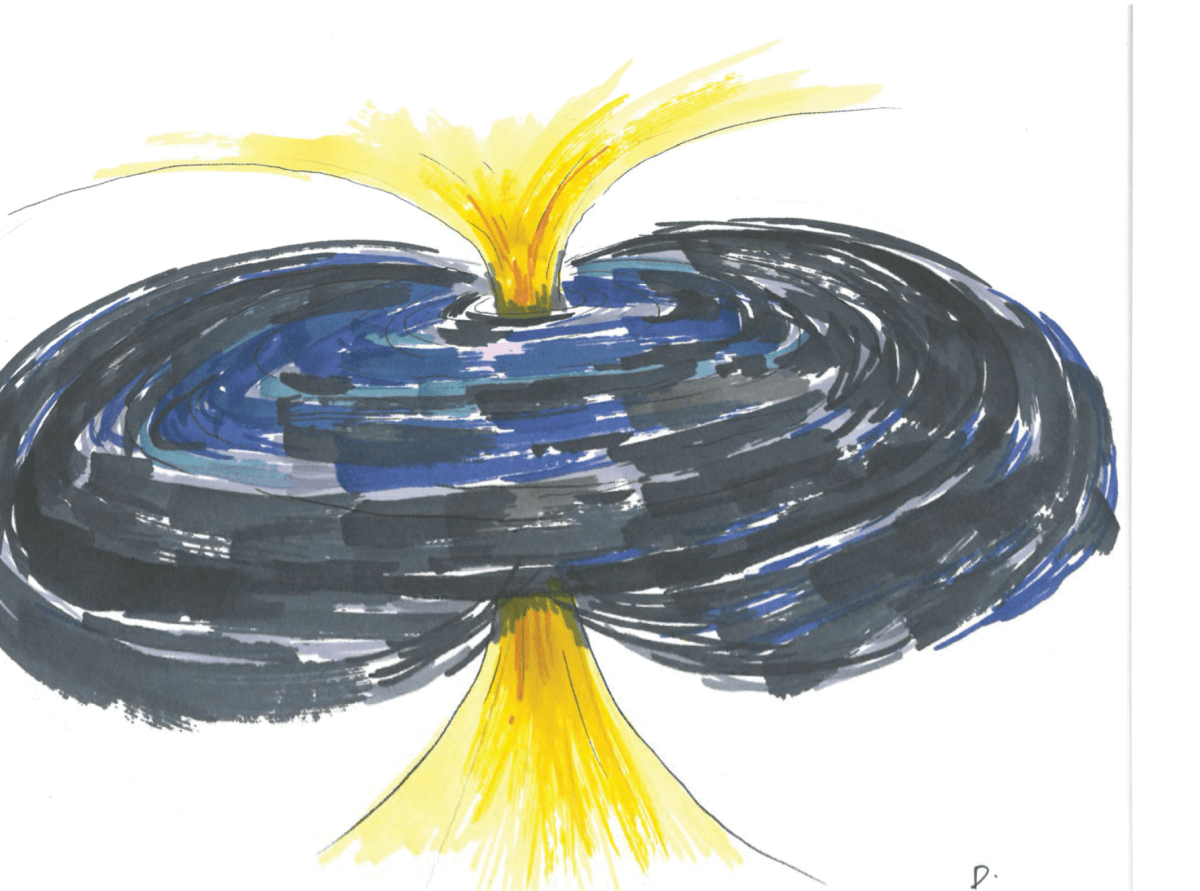Black holes are perhaps the most whimsical yet terrifying aspect of our universe. These cosmic carnivores have long mystified scientists by defying all known laws of physics. They were predicted by Albert Einstein’s theory of general relativity, though Einstein himself considered them too ‘weird’ to exist.
Black holes have several mysterious qualities and to many, are the most fascinating objects in space. For these objects, fact becomes stranger than fiction. Read on to delve deep into these regions of spacetime and find nine peculiar ‘black hole facts’ to ponder…
1. Black holes come in all sizes, ranging from nanoscopic to colossal
There are hypothetically three main types of black holes, characterised by mass and size. The smallest are called ‘primordial black holes’, which are believed to be as small as a single atom, yet have a mass similar to a large mountain (think Mount Everest!).
Medium-sized black holes, known as ‘stellars’, are the most common. These black holes typically weigh 20 times more than the sun and can fit inside a ball with a 16-kilometre diameter. Dozens of these are likely to exist inside the Milky Way.
‘Supermassive black holes’ are the most colossal. These monsters are more substantial than 1 million suns combined and can fit inside a ball with a diameter the size of the Solar System. Sagittarius A is an example of a supermassive black hole that is located in the centre of the Milky Way.
2. Most black holes are formed from collapsed stars
Stellar black holes are formed when the centre of a star collapses on itself. This event commonly results in a supernova: an exploding star that blasts into space. Eventually, the collapsed star compresses into a tiny, dense singularity, forming the centre of the black hole. Primordial black holes are believed to have formed soon after the Big Bang, while supermassive black holes formed at the same time as the galaxy in which they live.
3. Black holes are invisible to the naked eye
No light can escape black holes. However, their gravitational pull affects the orbit of nearby stars, allowing scientists to discern them. The materials inside a black hole’s accretion disk – a disklike flow of material rotating around a black hole – also heat to extremely high temperatures, which emits light that can be detected by telescopes.
4. Black holes are scarily abundant
It is thought that our Milky Way galaxy alone holds 100 million stellar black holes. With 100 billion galaxies out there – each probably containing 100 million stellar black holes of their own – the total number of black holes is astronomical.
5. Black holes warp time and space
The extreme gravitational pull generated by black holes is a result of matter being compressed into a tiny space. If you happened to pass by a black hole, the pull would increasingly slow time and distort space. You would be dragged closer and closer to the hole, and eventually spiral inwards and become “spaghettified” as you plunge towards the black hole’s centre. At this point, gravity equations fail catastrophically because the warping of space-time is off the charts. Calculations approach infinity and thus lose their meaning.
6. Nobody knows what goes on inside black holes
Also referred to as the point of ‘no return’, the event horizon is the boundary that marks the limits of black holes. Nothing can escape past this point, including light and radiation. Therefore, everything that enters a black hole can’t get out or be observed from outside the event horizon. This means that what happens inside a black hole is largely unknown. The only way of finding answers (that we know of) is to journey inside, but with the consequence of never returning.
7. Black holes devour matter – but also weirdly spit it out
These galactic beasts prey on any unlucky material that wanders too close. Thankfully, Earth isn’t on a collision course with any identified black hole. However, Sagittarius A occasionally belches ‘spitballs’ the size of planets that might someday destroy us. Spitballs can travel up to 30 kilometres per hour and are made from assembled matter that escapes just before passing the point of no return.
8. There are some rogue ones
When galaxies collide or merge, black holes can be thrust from the crash site and left to travel through space at whopping speeds. The first known ‘rogue black hole’ was around 600 million times our sun’s mass and roamed space at 5.9 million kilometres per hour. It is likely that hundreds of other rogue black holes wander the Milky Way today.
9. Supermassive black holes can create new stars
Similar to how spitballs are expelled, supermassive black holes occasionally release enough material to form entire new stars. Some of these stars end up in deep space, far beyond their origin galaxy. As they actively regulate star formation, an article released by Nature in January 2018 suggests that black holes thus control the number of stars within galaxies.
We acknowledge the Ngunnawal and Ngambri people, who are the Traditional Custodians of the land on which Woroni, Woroni Radio and Woroni TV are created, edited, published, printed and distributed. We pay our respects to Elders past and present. We acknowledge that the name Woroni was taken from the Wadi Wadi Nation without permission, and we are striving to do better for future reconciliation.
